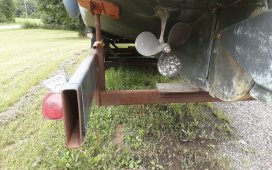jdege
New Member
- Joined
- Dec 16, 2020
- Messages
- 138
I'm thinking about installing a pair of Torqeedo Cruise 6.0 outboards on my boat. These are 48V motors, and Torqeedo's battery prices are absurd, so I'm looking at something like 4 of SOK's 12V 100Ah marine batteries wire d in series. 4×12V rather than 1×48V or 2×24V because the lower individual weight will make them easier to handle when installing them or removing them from the boat. These are going to be pretty much permanently installed, except for removing them during the off season.
Eventually I will want to be able to charge these in a number of ways:
Right now, I'm trying to figure out what charger/chargers to use, when plugged into a single 30A AC shore power pedestal.
Ideas?
Eventually I will want to be able to charge these in a number of ways:
- Shore power
- Solar panels
- Suitcase gasoline generator
- Regen when sailing
Right now, I'm trying to figure out what charger/chargers to use, when plugged into a single 30A AC shore power pedestal.
Ideas?






